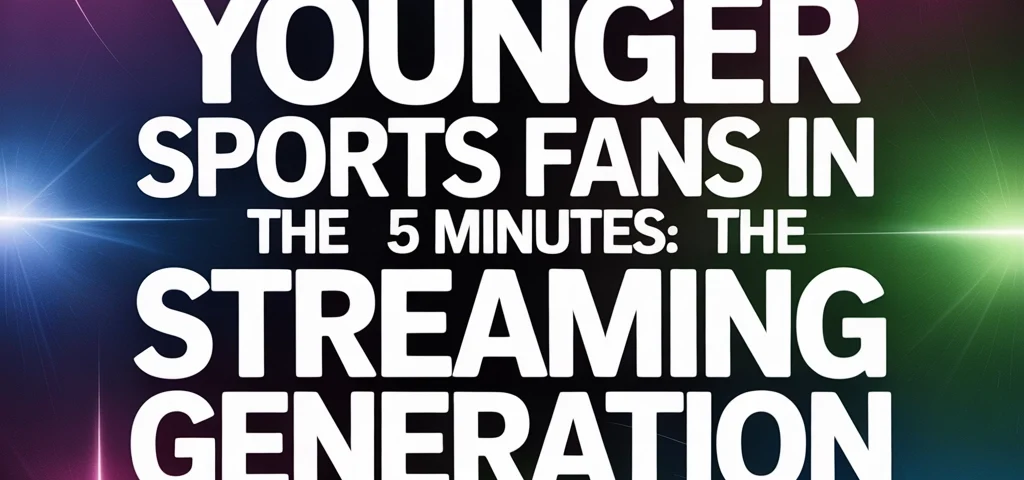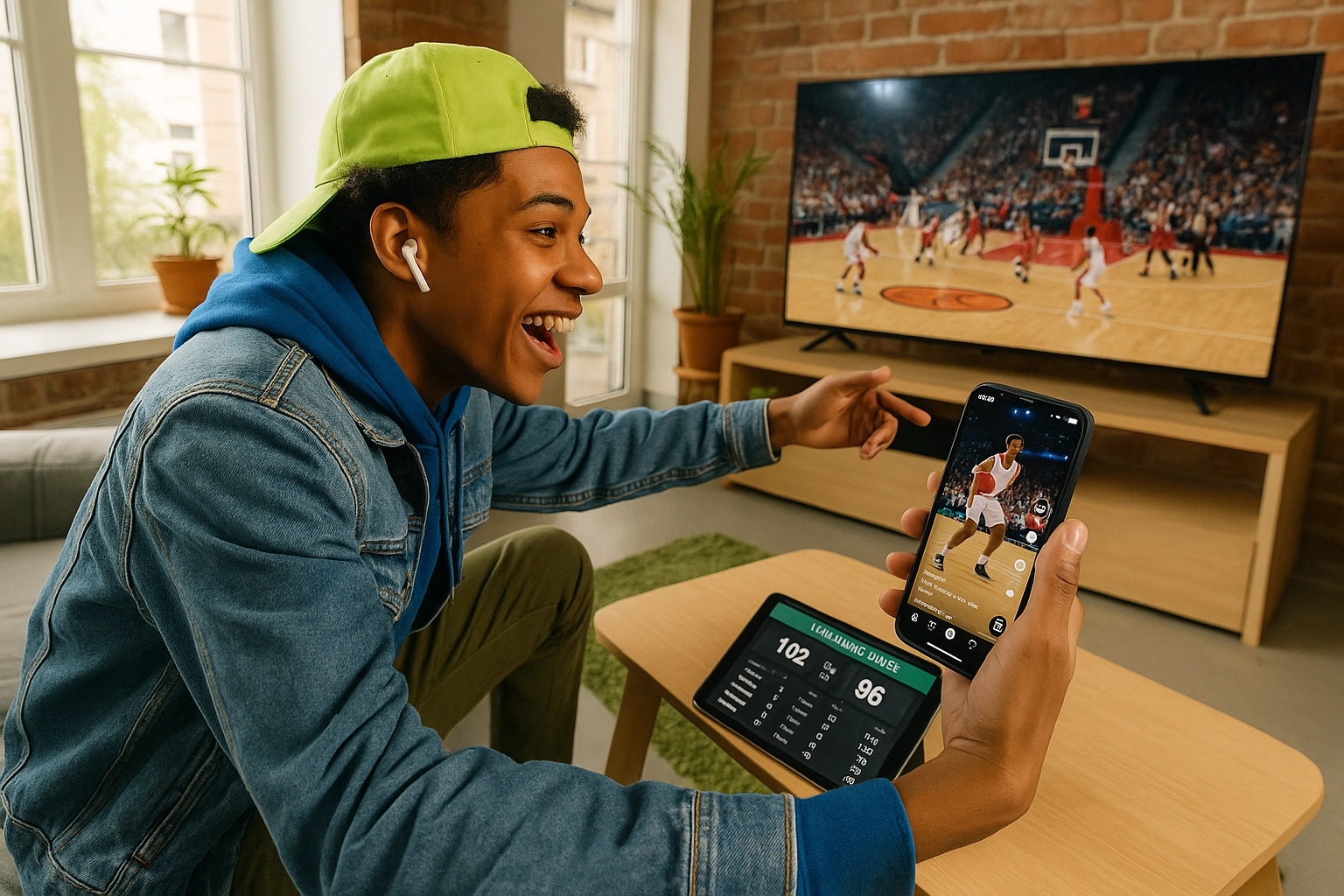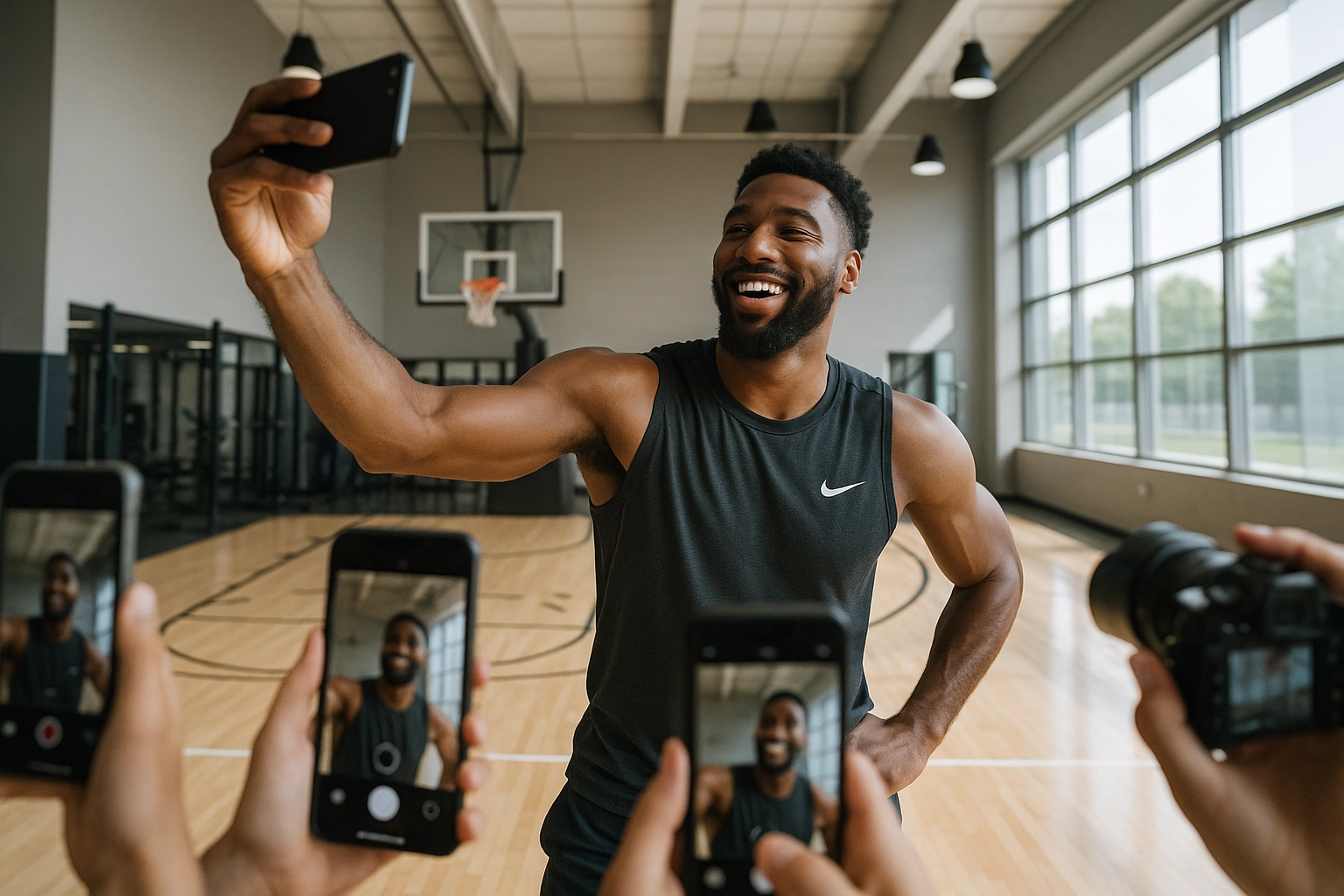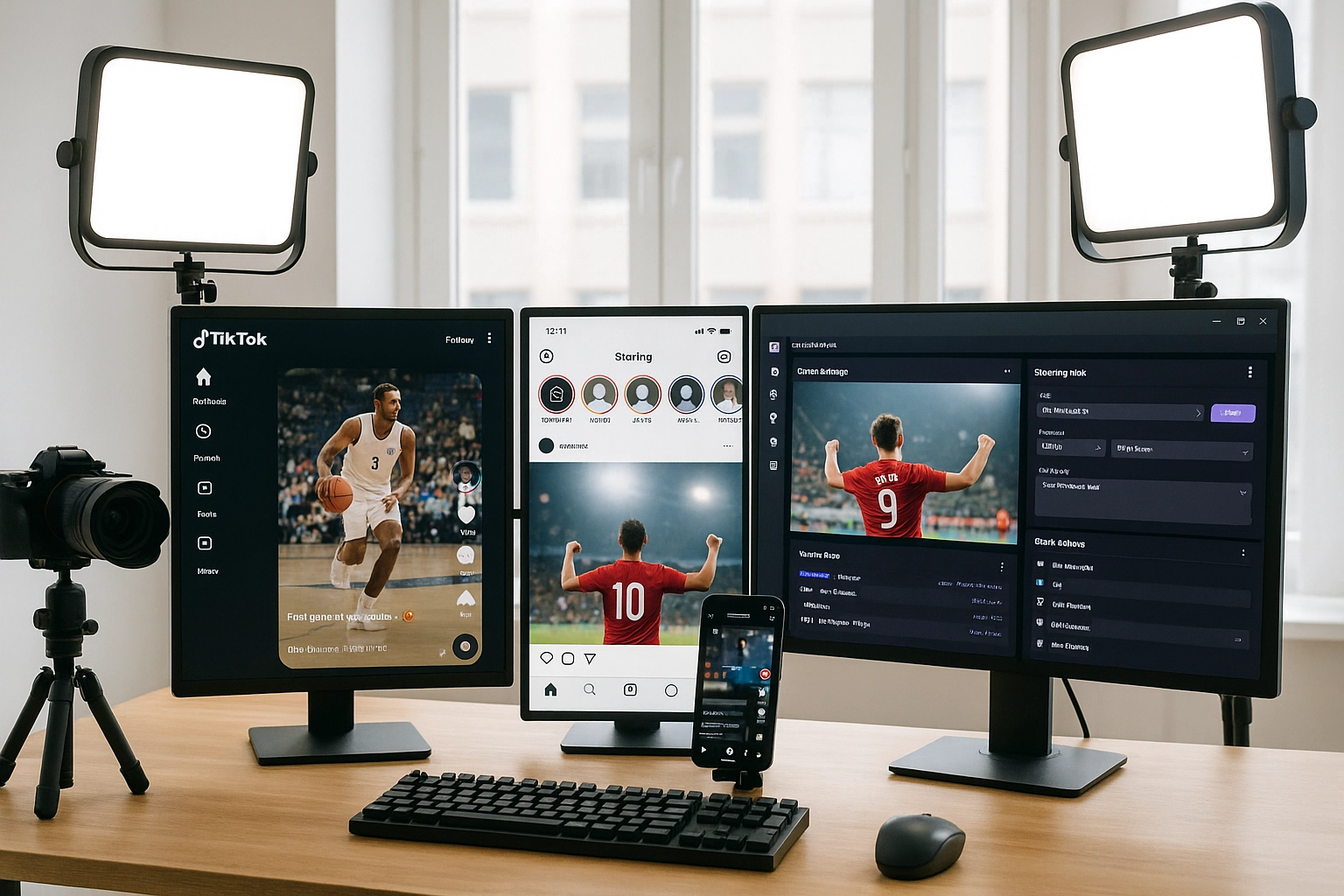
Implied Sponsorship Secrets: How Small Brands Win Big During Major Sporting Events
December 30, 20247 Mistakes You're Making with Stadium Marketing (And How to Fix Them Without Spending Millions)
February 1, 2025How to Reach Younger Sports Fans in 5 Minutes: The Streaming Generation Guide

74872598 cb9d 4c52 a935 d57c2bce7214 hero picture
The traditional sports marketing playbook is dead. Younger sports fans have completely revolutionized how they consume content, and brands that don't adapt immediately will lose this generation forever.
Here's the reality: Only 70% of fans aged 18-24 watch full live games weekly, compared to 87% of fans over 55. This isn't a temporary shift: it's the new normal that demands immediate action.
The 5-Minute Strategy That Changes Everything
Want to reach younger sports fans effectively? Stop thinking like a traditional broadcaster and start thinking like a social media native. The streaming generation operates on completely different principles, and understanding these principles gives you an immediate competitive advantage.
The numbers don't lie: 40% of sports viewers under 35 consume content through social media platforms, versus just 13% of older viewers. This represents a massive opportunity for brands willing to pivot their approach.
Master the Multi-Screen Reality
Younger fans don't just watch sports: they experience them across multiple devices simultaneously. Over 25% of sports fans now use multiple devices while watching events, primarily to get updates on other games happening at the same time.
This multi-screen behavior creates unprecedented opportunities for engagement:
• Second-screen content that complements live broadcasts
• Real-time social media integration during games
• Interactive features like live polls and betting odds
• Cross-platform storytelling that spans multiple touchpoints
The key insight? Younger fans expect you to meet them where they are, not force them into traditional viewing patterns.

Social Media: Your New Stadium
TikTok has emerged as the critical battleground for Gen Z sports fans. Organizations need comprehensive coverage from start to finish on this platform, not just highlight reels posted after the fact.
Here's what actually works:
• Pre-game content that builds anticipation and context
• Live moments shared in real-time during events
• Post-game analysis that extends the conversation
• Behind-the-scenes access that traditional media can't provide
43% of Gen Z fans regularly scroll through social media while watching sports. This isn't distraction: it's enhanced engagement when executed correctly.
Nearly all Gen Z fans use social media to consume sports content, and 80% follow professional athletes online. This creates direct pathways to influence viewing and attendance decisions.
The Streaming Revolution You Can't Ignore
Direct-to-consumer streaming has captured 40% of viewers under age 35, representing a fundamental shift away from traditional broadcast bundles toward specialized content delivery.
The growth trajectory is undeniable:
• 29% of Gen Z fans use Amazon Prime for sports content
• 22% growth in 16-24 year olds watching highlights online weekly
• 59% increase in sports streaming usage since Q4 2021
Smart brands are already capitalizing on this shift by creating streaming-first content strategies that prioritize on-demand access and personalized experiences.
Athlete-Centric Marketing That Actually Works
The relationship between younger fans and athletes has evolved into direct, personal connections that bypass traditional media entirely. Athletes now function as powerful influencers that fans trust and admire.
This creates massive opportunities for authentic engagement:
• Direct athlete partnerships that feel genuine, not corporate
• Family and personal content from athletes' social accounts
• Real-time interaction during games and events
• Exclusive access to training and preparation content
Gen Z fans show genuine interest in athletes' families and personal lives, creating opportunities for comprehensive athlete branding strategies that extend far beyond game performance.

Interactive Experiences That Drive Engagement
Younger fans demand significantly more interactive and personalized content than older demographics. They actively seek out interactive features like live stats, polls, and sports betting during broadcasts.
Highlight packages and shorter-form content have become essential for attracting Gen Z and Millennial sports fans who prefer digestible, shareable moments over full-game coverage.
The most successful brands are creating:
• Real-time polling during live events
• Gamified experiences that reward engagement
• User-generated content campaigns that amplify fan voices
• Personalized content recommendations based on viewing history
The Urgency Factor: Why You Must Act Now
86% of younger fans expect their viewing habits to change significantly by 2027. This gives you approximately 18 months to implement comprehensive strategies that address these shifting preferences.
The transformation is accelerating rapidly. Traditional linear TV is losing dominance as subscription streaming continues growing across major markets. Organizations that wait risk being left behind permanently.
Here's your immediate action plan:
• Audit your current content distribution across all platforms
• Identify key athletes who can serve as authentic brand ambassadors
• Develop streaming-first content strategies that prioritize mobile viewing
• Create multi-platform campaigns that span TikTok, Instagram, and emerging platforms
• Implement interactive features that encourage real-time engagement

Platform-Specific Strategies That Deliver Results
Each platform requires a distinct approach tailored to younger fans' consumption patterns:
TikTok Strategy:
Complete game coverage from start to finish, not just highlights. Pre and post-game content proves increasingly crucial for building sustained engagement.
Instagram Strategy:
Focus on visual storytelling that showcases behind-the-scenes moments and athlete personalities. Stories and Reels perform significantly better than traditional posts.
Streaming Platforms:
Develop exclusive content that can't be found elsewhere. Sports-specific D2C streaming apps now capture 40% of viewers under 35.
Measuring Success in the Streaming Generation
Traditional metrics don't capture the full picture of younger fan engagement. You need to track:
• Cross-platform engagement rates rather than single-platform metrics
• Social media mentions during live events
• Multi-device usage patterns throughout broadcasts
• Content sharing velocity across different demographics
• Direct athlete interaction rates on social platforms
The most successful brands understand that younger fans create their own highlights and share their own perspectives. Your job is to facilitate and amplify these organic moments.
The Competitive Advantage of Acting First
Organizations that embrace these changes now gain significant first-mover advantages. While competitors struggle with outdated approaches, you'll already be speaking the language that younger fans understand.
The streaming generation represents the future of sports consumption. Their preferences today become mainstream tomorrow. Early adoption of their consumption patterns positions your brand as innovative and forward-thinking.
Ready to transform how you reach younger sports fans? The streaming generation is waiting, but they won't wait long. Every day you delay implementing these strategies is another day your competitors can gain ground.
Have questions about reaching the streaming generation effectively? Contact Sportrons for comprehensive sports marketing strategies that actually connect with younger audiences.

